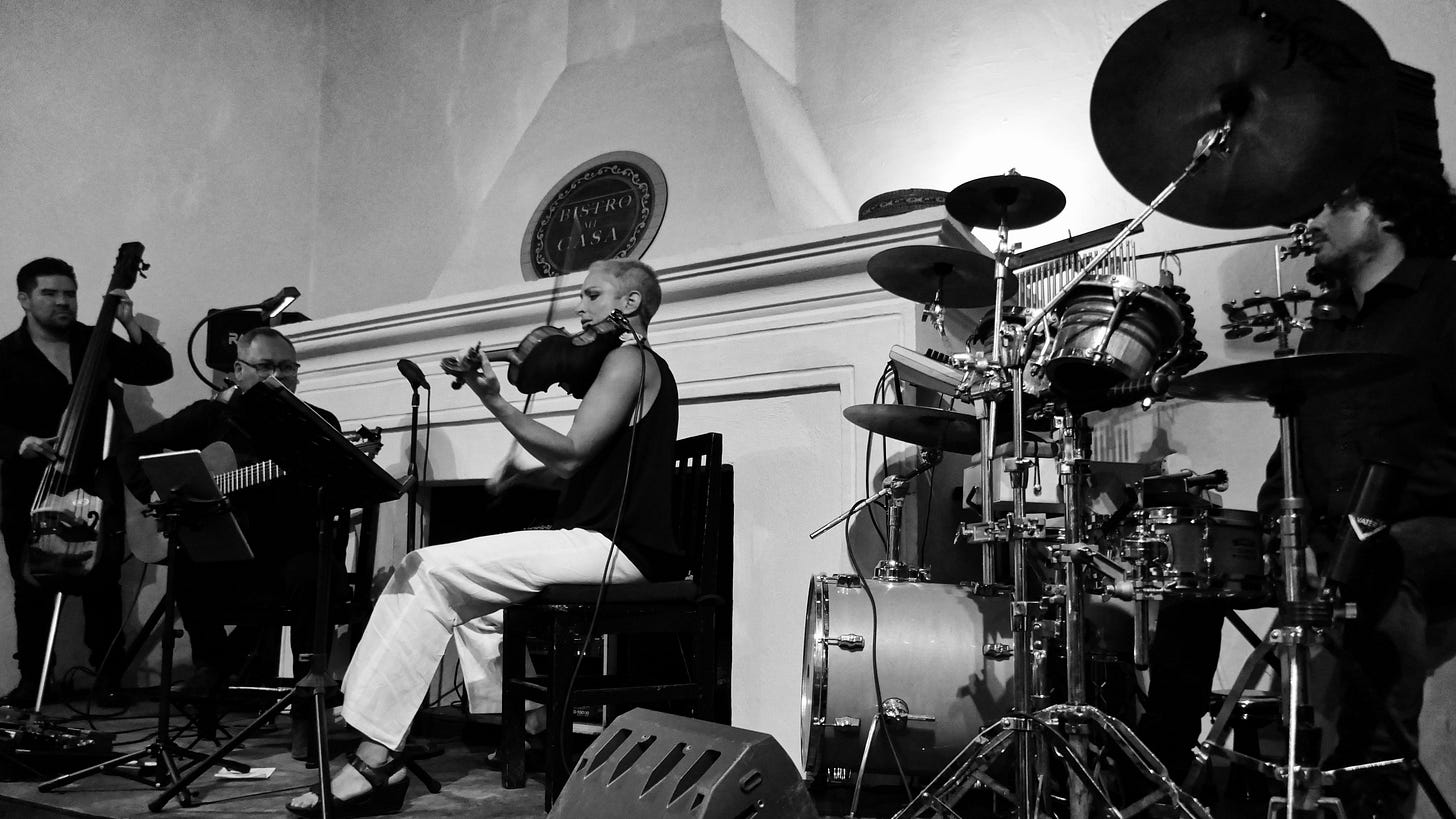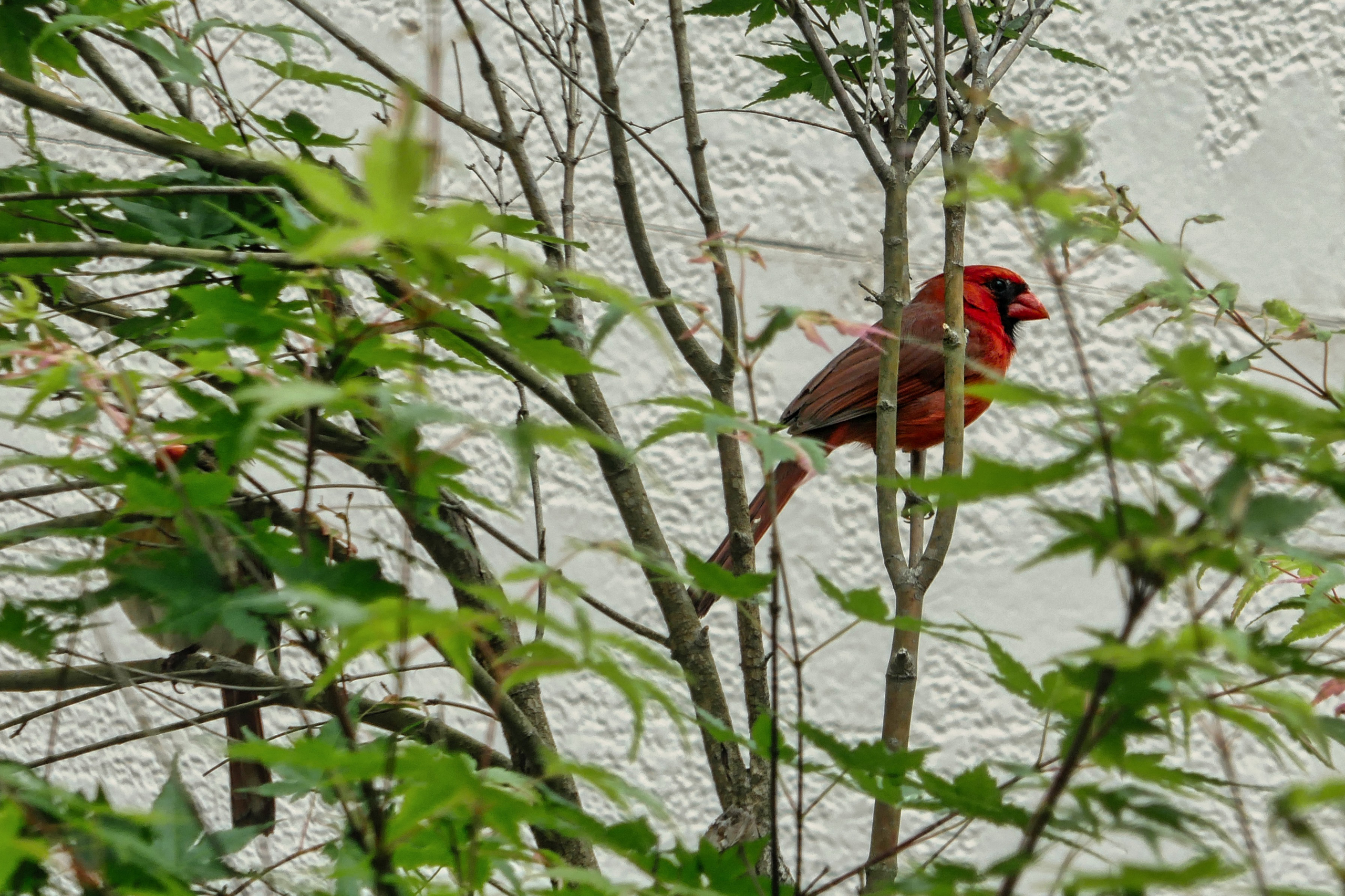
I gripped the handle of the jump rope, unaware of anyone or anything around me. My stage, a wooden picnic table, my audience, the trees, swings, and sky. Song after song, I belted out the melodies from all my favorite yellow vinyl records.
In those moments, I never worried about the pitch or if the words came out right, or even if anyone cared. Singing always made me feel alive, unencumbered with the worries of the world, then or now.
Music, lifting our voices together, spans across time and cultures. Singing together, blending our voices as one, on pitch or not, disregards our differences. We build community, connection, and collaboration, even if for the few brief minutes of a single song.
I have sung in choirs, folk groups, and with a band of friends bringing music to everything from weddings, parades, reunions, and even a couple of local bars, but not the rowdy kind. Our band included a stockbroker, a law librarian, a couple of oil executives, and a teacher, me.

Music in San Miguel de Allende © Kathryn LeRoy
We knew from the beginning our goal was not to hit the big time or travel on tour, drawing thousands and performing in huge arenas. We sang in corners, on floats, in backyards, and on occasion, a real stage.
We didn’t have a written mission statement, but we knew our purpose: to have fun, add joy, and bring people together through music. This group of “garage musicians and vocalists” shared friendship and a love of harmony.
Our infectious leader, “Texas T,” could get everyone dancing and singing along. I don’t remember any gig where he didn’t draw people into magical musical moments.
What is it about singing together that changes us, even for the length of a song? Modern technology allows neuroscientists to investigate how our brain functions, and in turn, how music, group singing, good or bad, benefits us physically, emotionally, and mentally. Our group never realized how we contributed to these benefits, but we often felt the difference.
We were born to sing. It’s primal and it’s tribal. Voice is the language of our hearts. It’s how we express ourselves.
—Tania de Jong, (How singing together changes the brain)

Sing Along © Kathryn LeRoy
Tania gives ten reasons to make singing your drug of choice:
- Release endorphins and increase levels of oxytocin
- Improve posture, breathing, and blood flow
- Save money: our voice is our free human instrument
- Create new neural pathways and improve brain meta-plasticity
- Ward off age-related decline by continuously ‘exercising’ your brain
- Heal depression, strokes, and speech abnormalities
- Promote social bonding and cohesion, and rediscover your own identity
- Relieve mental health issues; feel happier, better connected, and supported
- Connect with other diverse voices and your community
- Be smarter, healthier, happier, and more creative
You may think you cannot sing, but sing anyway in the shower, in a closet, or with a group. It’s good for you.
You can find me singing to the flowers and along with the birds.
The garden is alive with the sound of music.
Sing Along
For Emi:
Words to Live By
“Sing like no one’s listening, love like you’ve never been hurt, dance like no one’s watching and live like it’s heaven on earth.”
—Attributed to Mark Twain

The Audience © Kathryn LeRoy
I always welcome your thoughts, so please leave a comment.
Thanks for reading. Feel free to forward this weekly note to someone who would enjoy a few words of inspiration. Or if you received this from a friend and want to receive my weekly post, sign up here.
And always—
Be kind. Be brave. Be you.
Photo: © Kathryn LeRoy



What a wonderful talent and experiences to have. I was reading several stories of connection through music lately, healing! I think I’ll try to put more effort following the lyrics on my YouTube music in song. You’re right, anyone can find a place to sing, picnic tables especially! Plenty of inspiring bird song too.😏
Yes, do keep singing, humming, or listening to music. I know it always makes me feel better.